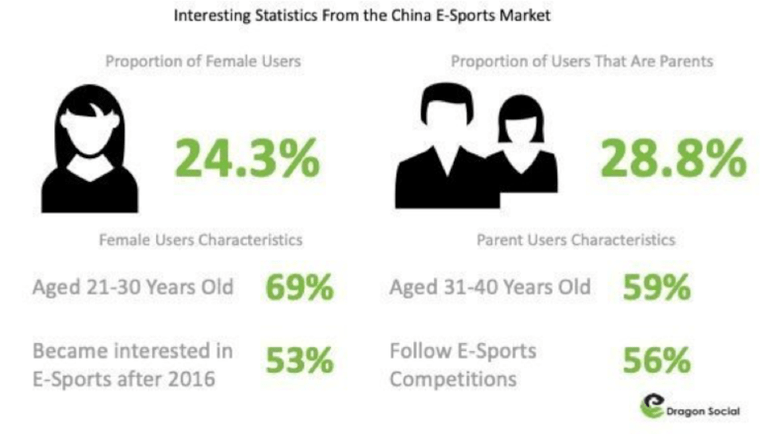Livestreaming In China: Top 5 Apps You Need To Know
It is estimated that more than 520 million people watch user-generated livestreams in China in 2020 – a massive 69 percent increase from 2016’s figures, and these numbers will only continue to rise. In fact, about 73 percent of current non-users of livestream platforms in China indicated keen interest to explore livestream in the near future.
In 2019, the total revenue of livestreaming e-commerce industry reached 433.8 billion yuan, and it is expected to increase to 916 billion yuan by 2020. What sets livestreaming apart from other methods of marketing is its straightforward, highly targeted and efficient delivery of real-time content.
Livestreaming is undoubtedly the new holy grail for brands to communicate with Chinese audiences. The first step is to select the correct platform that provides the suitable features, content and branding that engages your desired target audience effectively.
Here at 86insider, we have compiled a list of top 5 livestreaming apps – both entertainment and e-commerce skewed – that you must get your hands on in order to tap into this burgeoning and lucrative industry.
#5 INKE – “EL CLASSICO”

Inke was launched in May 2015 with the slogan that anyone can livestream and currently has over 25.5 million monthly active users (MAU). Inke is well known for being family-friendly and positive, taking a clear stance against violent or risqué content. In fact in 2016, Inke was the choice of application for teachers to live stream lessons during the “Airpocalypse” in Beijing.
Pros:
– Positive, vibrant, family-friendly.
– Suitable for wholesome (educational) content targeted at the mass market.
Cons:
– Diluted audience pool, unable to target niche markets.
– Laggard in innovation compared to other apps.
#4 TAOBAO LIVE – “THE E-COMMERCE KINGPIN”

Taobao Live is Alibaba Group’s dedicated livestreaming e-commerce channel. According to Taobao Live’s latest figures, the gross merchandise volume generated by the platform grew by 150% per year for three years in a row. By the end of 2019, consumers were spending over 350,000 hours each day combined watching programs on the platform. Meanwhile, newly registered livestreaming accounts nearly doubled year-over-year in 2019.
Pros:
– Enormous user consumption appetite, ranging from FMCGs to rockets (yes, a rocket launch service was sold for US$5.6million on Taobao Live).
– Able to tap onto potential Big Data with Taobao’s large number of user base, reaching more target audience.
Cons:
– Be prepared to pay a sweet sum to hire a popular live streamer to brand your products to viewers.
– Only useful for e-commerce.
#3 DOUYU LIVESTREAM – “TWITCH’S BETTER TWIN”

DouYu which literally translates into “Fighting Fish”, is an app by DouYu TV and was first launched in 2014. DouYu, the largest game-streaming platform in China, is backed by both Tencent and Phoenix Media. What sets Douyu apart from other livestream apps including its direct rival HuYa, is that it is essentially a gaming livestreaming app with exclusive streaming rights to 29 major tournaments in China. Users get to stream games such as DOTA2, League of Legend and Honor of Kings to its audience. With 160 million MAU, DouYu has now succeeded in surpassing Amazon’s Twitch MAU of 140 million.
Pros:
– Premier destination for game live streaming with many top-tier livestreamers.
– Niche target audience
– Great for e-sports and video games industry.

Cons:
– Need to understand the psyche of “gamers” in order to attract them. Pretty much a make or break with the community.
– Livestreamers can set their own advertisement preferences for their channels i.e. sometimes money can’t buy you the best ad spots (Psst, build a relationship with the hosts first).
#2 KuaiShou – “The Dark Horse”

KuaiShou, literally meaning “fast hand”, which is also known as ‘Kwai’, was first launched in 2011 as ‘GIF KuaiShou’. It changed its name and function to what we know today in 2014. In May 2019, KuaiShou’ exceeded 400 million MAU, 200 million Daily Active Users (DAUs) and has more than 1.3 billion pieces of original content on its platform. A central and defining characteristic of KuaiShou is that it is an app for the masses and the company is determined to cater to the large majorities of non-elites.
Pros:
– Kuaishou’s algorithm distributes traffic amongst more videos by having a majority of its video recommendations with much fewer likes (no echo chamber effect).
– Greater accessibility and inclusivity to the common folks (93 percent of the Chinese population is in second and third-tier cities).
– Users live in smaller communities = greater video engagement rate.
Cons:
– Stereotype that KuaiShou is for villagers.
– Audience has relatively lower purchasing power. No-no for luxury brands.
#1 Douyin – “The Ubiquitous Champion”

This #1 app spot should come as no surprise to many, and it rightly belongs to Douyin (or for the uninitiated, Chinese precursor to TikTok). We are looking at more than 400 million DAU amassed on this livestreaming app launched by Beijing-based Bytedance since September 2016. Douyin is a clear leader in the livestreaming app development with advanced functions like in-video search, where users can search for someone’s face to find more videos of them. Conversely, users can also search in-video products or clothes and make purchases directly. Compared to its western counterpart TikTok, Douyin attracts not only the teenage crowd with the usual glitzy groovy dance content, but also has an older user base as it includes micro-vlogs, lifestyle content, business advice and videos from local police.
Pros:
– 24 percent users in first-tier cities with high spending power.
– Clear strategy to get bumped up to “recommended”, have the most likes.
– White-collar, young urban youth audience.
Cons:
– Algorithm-driven content distribution also known as really expensive to reach effectiveness.
– Lower video engagement rates due to nature of users’ social relationships.
That rounds up our 86insider’s list of top 5 livestreaming apps in China! How many of these apps did you know prior to this? Would you have recommended another livestreaming app in the list instead? Send us your thoughts at 86insider@86links.com.
Original post:





